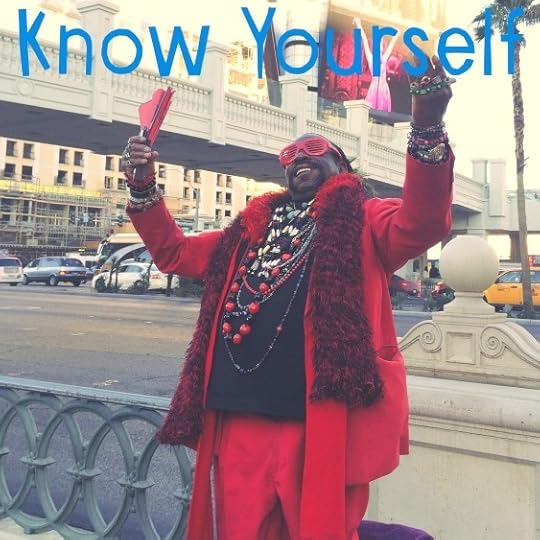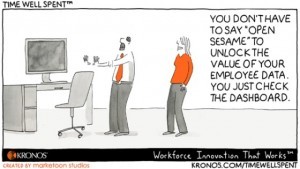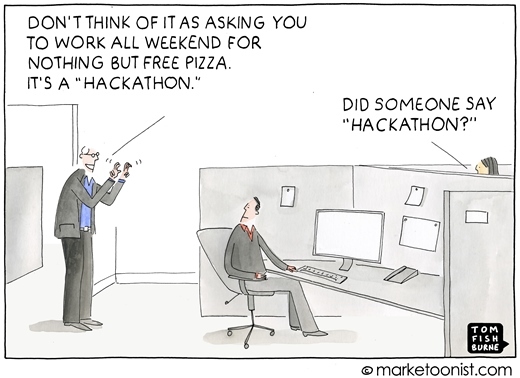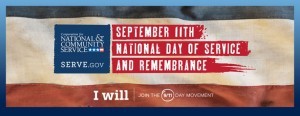Sharlyn J. Lauby's Blog, page 170
September 24, 2015
Self-Management Success: Know Yourself (Part 1)
There’s been a lot of talk in the news about holacracy. It’s defined as running an organization where power doesn’t lie within a management hierarchy and decision-making is distributed throughout the organization. Holacracy relies heavily on autonomy.
Speaking of autonomy, years ago, I heard Dan Pink talk about his book “Drive”, which focuses on the three elements of motivation: autonomy, mastery and purpose. He said that you can’t manage engagement but if you self-manage that equals engagement.
Interesting concept.
With the focus on employee engagement, I totally get it. Fewer organizational layers is a good thing. Getting everyone involved in business decisions is great. But for self-management (holacracy, autonomy, or whatever term you want to use) to work, employees need to be given the tools to thrive in this environment. You can’t simply say, “Poof! You’re self-managing now.” and expect everyone to know exactly what to do.
So I thought it might be interesting to start a discussion on qualities of self-management. The first quality is knowing yourself. It’s about understanding your strengths and weaknesses. Being very honest with who you are. While we are subject matter experts at some things, we’re not all rock stars at everything.
There are a few ways you can spend time learning about yourself. I always say there are three ways to learn something – hearing it, seeing it and doing it.
Ask for feedback. Talk with people who have a sense of your working style and ask them for feedback about your strengths and areas for improvement. If you don’t have anyone you can ask right now, think about prior performance appraisals you’ve received and use that feedback.
Once you get feedback, take the time to process and evaluate it. I’d caution people not to dismiss it immediately. You might agree with all of it, parts of it, or none of it. But think it through, make the decision for yourself, and then decide what you will do with the information. Consider creating a SMART plan to develop a skill or competency.
Read books about developing strengths. One book on my bookshelf is Marcus Buckingham’s “Now Discover Your Strengths.” In the book, there is an opportunity to take an assessment that can help you define your personal strengths. Great way to create your path of self-discovery.
If you have ever taken any assessments in the past, this is a good time to take them out and review them. Consider the results and, like the process above, evaluate what you need to focus on moving forward.
Step out of your comfort zone and do something you haven’t done before. For example, if you’re apprehensive about public speaking…go out there and volunteer to do a public presentation. Use the evaluations from the sessions to improve. Then do it again.
Stepping back to assess and evaluate our personal strengths and weaknesses is a valuable exercise for both our professional and personal lives. It allows us to keep focused and positioned to adapt as necessary.
In the next installment, we’ll talk about how self-management and our careers are intertwined.
Image courtesy of Sharlyn Lauby
The post Self-Management Success: Know Yourself (Part 1) appeared first on hr bartender.






September 22, 2015
Background Screening Impacts the Candidate Experience
(Editor’s Note: Today’s post is brought to you by our friends at HireRight , a leader in global background checks, drug testing, and employment verification services. More than 70 percent of the Fortune 100 use HireRight for their employment screening needs. Did you know that HireRight offers an extensive resource library with case studies and checklists? You can check it out here . Enjoy the post!)
While the face-to-face interview is a part of the candidate experience, it’s not the entire experience. The candidate experience includes employment branding, career portals, offer letters, etc. It even includes other steps in the overall hiring process, like background screening, where organizations might leverage third-party service providers. Every touchpoint in the hiring process is a part of the candidate experience.
A recent Harvard Business Review article pointed out the shift that’s taken place: power has shifted from employers to candidates. And businesses are feeling the impact. In HireRight’s 2015 Employment Screening Benchmark Report, 51 percent of organizations said that finding and retaining talent was their top business challenge.
The last thing an organization wants is to not be able to innovate the next big thing or not win a piece of business because they don’t have the talent.
That’s why the candidate experience is important. Organizations understand that a positive candidate experience will yield the best talent. They also understand that the term candidate experience extends beyond interviewing to all aspects of the recruiting cycle, including background screening. In the same HireRight report, 25 percent said improving the candidate experience was their top recruiting challenge.
There are a couple of reasons improving the candidate experience might seem overwhelming. If we look at only the background screening piece:
New staffing strategies require a new approach to the background screening process. We know the value background screening creates in more consistent organizational safety, improved compliance and (most importantly) better quality of hire. However there’s a disconnect between background screening for regular staff and contingent workers. According to the report, 82 percent of organizations do some sort of background screening on “regular” staff, contingent workers are not screened at the same level. As organization’s tap into contingent workers as part of their recruiting strategy, they also need to evaluate how contingent workers are hired, trained, engaged, and retained. That includes if and how they are background checked.
Our organizations are filled with global workers. Today’s employees are truly borderless. They have obtained a global education, worked for global employers and managed global assignments. This means a vast majority of background checks have a global component. We want those global candidates to become our employees. Their experience and expertise brings value. And yet, according to the report, only 15 percent of respondents conduct global verifications.
These are just two examples of how rapidly the employment process is changing and its impact on the candidate experience. As human resources professionals, it’s important to stay on top of these trends. We can’t afford to have ineffective and inefficient processes negatively impacting the candidate experience.
So how do we do that? By sharing our expertise! Participate in HireRight’s annual employment screening benchmarking survey. Don’t say, “I’m too busy and don’t have the time.” The survey takes 10 minutes. As a thank you for participating, respondents can enter to win one of five $100 American Express gift cards and, in early 2016, will get a copy of the survey findings and an invitation from HireRight to a webinar where the findings are discussed.
If you’re not already doing it, in the not too distant future, we will be sitting around tables sharing strategies to improve the candidate experience and find the best talent. Taking a 10 minute survey to stay on top of what’s happening is a small investment of time. Don’t delay – the survey is only open until Friday, September 25.
The talent wars have begun. As HR pros, we’re going to need all the resources we can get.
The post Background Screening Impacts the Candidate Experience appeared first on hr bartender.






September 20, 2015
Selling the Value of Employee Surveys – Ask #HR Bartender
I received this note after my webinar last week with HireRight on engaging and retaining talent. It’s such a good question I wanted to share it with you.
Hello Sharlyn. We’ve done employee surveys in past and plan to do one again soon. How do I ‘sell’ the value of doing an engagement survey to some of the managers/VPs who feel they have such a good repertoire with their employees that they don’t need the survey?
I totally get it. Your organization has worked hard to build a great culture that includes excellent communications. That was the goal so, now that the organization has achieved it, employee surveys aren’t necessary. Right?
Wrong.
The purpose of building good working relationships and developing open communications isn’t to eliminate surveys. An employee survey serves a valuable purpose. They allow organizations to gather consistent feedback in an effective manner. Yes, organizations could conduct face-to-face surveys but it would take an incredibly long time and you would need to have some sort of consistent way of measuring comments. Surveys provide an means to collect information efficiently.
Where managers and employees having a good repertoire becomes valuable is in debriefing the survey results. Managers will feel comfortable being transparent about survey results. Employees will feel comfortable giving open and honest responses.
So if you’re trying to sell senior management on an engagement survey, here are a few things to consider:
What’s the purpose of the engagement survey (versus other surveys being conducted)? In this note, there’s mention of other employee surveys. While surveys are important, I think we all realize there is such a thing as survey overload. Be prepared to articulate why the engagement survey is different, valuable and worth consideration.
Is it possible to combine efforts? If in preparing your response to the first question you realize that a separate survey might be too much, explore adding a couple of engagement related questions to your existing survey. Updating survey questions to keep up with current business trends is perfectly normal. And smart!
How does the engagement survey benefit the bottom-line? We know the value of engagement. That’s not the purpose of today’s post. But to sell an engagement survey, we have to draw a connection between doing the survey, getting employee responses to the survey, and the bottom-line of the organization.
Surveys are a very effective and efficient way to gather information. They are not a replacement for human interaction. Nor is face-to-face conversation a replacement for gathering and measuring employee feedback. They are designed to complement each other.
The worst thing a company can do is ask for feedback and then do nothing with it. So pitching the idea of a survey involves research and preparation. But it can be done. Just be prepared with the right answers.
Image courtesy of Sharlyn Lauby
The post Selling the Value of Employee Surveys – Ask #HR Bartender appeared first on hr bartender.






September 18, 2015
Your Data Isn’t Magic – Friday Distraction
(Editor’s Note: Today’s post is brought to you by our friends at Kronos , the global leader in delivering workforce management solutions in the cloud. Kronos and The Workforce Institute have released a survey showing a changing mindset about hiring boomerang employees. Very interesting data. You can check it out here . Enjoy the post!)
I’m a huge fan of using numbers to make business decisions. As a small-business owner, my time is valuable. I don’t want to waste time on activities that will not benefit me or the company. So Mr. Bartender and I regularly look at data that impacts our business.
I couldn’t help but laugh at this Time Well Spent cartoon from our friends at Kronos.
One of the things we’ve realized over time is that looking at metrics is hard to do. In order for data to give you answers, it needs to have four qualities:
Timeliness – We need to understand what timely information means in our industry. Sometimes last month’s data is acceptable and other times it’s out of date.
Organization – Data needs to be packaged in a way that it can be understood. If you can’t read it, you can’t make good decisions using it.
Accuracy – Remember the phrase, “Garbage in; garbage out.”? Well, there’s so much data available to us today that we need to know what’s good and what’s garbage.
Relevance – To really get the most of data, we must be able to identify if something is a trend or part of an isolated snapshot. Understanding the relevance of data helps us make those determinations.
Getting data isn’t magic. It’s hard work. Data needs to be accurate and organized in order to be effective.
The post Your Data Isn’t Magic – Friday Distraction appeared first on hr bartender.






September 17, 2015
Work Journals Help Employees Accomplish Their Goals
Journaling is the notion of keeping a written record of thoughts and experiences. For some of us, our first journaling experience might have been keeping a diary when we were younger. I know people who have kept journals during trips or sabbaticals. I kept a journal after my car accident that was focused on my recovery.
That’s when I realized the value of work journals. They help you focus on a goal.
Recently, I stumbled across this post on the Career Contessa blog about the benefits of work journals. It’s a good read, I hope you’ll check it out. It reminded me of the value journaling brings and how work journals could be a helpful way for employees to focus and accomplish their goals.
Shawn Achor, author of The Happiness Advantage, recommends journaling as a way to create positive change. Journal entries don’t need to be long essays. They can be a few sentences. And they don’t have to be written in a Moleskine notebook. Work journals can be a simple notebook, a couple of notes in a planner, or an electronic app. It’s not about the notebook…it’s about consistently taking time to focus.
Now for some people, journaling might get dismissed as being a bit too cutesy. A participant in one of my training sessions labeled it a “Step Away from the Kumbaya” activity. According to Achor, research shows that developing positive habits has been linked to lower levels of stress, higher levels of resilience and higher levels of success. So there might be some very appropriate and productive ways to incorporate journaling into work.
Task forces, work groups, and committees: A great place to start a work journal might be with the company’s next special project. Participants can keep track of what the committee is working on, what’s going well and areas for improvement. In addition, participants can keep track of what they are doing as a member of the team.
Performance reviews and goal setting: Employees can use a work journal to help them achieve a major goal they need to accomplish. They can track their progress toward the goal, process setbacks and even document their successes. The journal becomes a valuable way for employees to focus on proven strategies for accomplishments.
Personal and professional development: Individuals might use a journal as a way to process their career goals. Looking to move up within the organization? A career journal might help create the necessary focus. Or looking to plan a retirement strategy? A work journal might be exactly what’s needed to outline a plan.
I continue to hear conversations about employee burnout, workplace stress, over-committed schedules and the need to do more with less. While I certainly can’t offer a silver bullet that will eliminate all of those things, I do know that each of us is capable of finding something that can help us. We just have to continue to explore and test-drive options until we find the one that works. Journaling might be an option. The next time you’re on vacation or have a short-term project, give journaling a try. See if you like it.
Also keep in mind that work journals might be equally effective as a reflection tool. Maybe after writing the journal, put it on a shelf for three months and then read it. See if you glean any insights after the fact. Journaling could be something that you choose to do in short spurts versus an everyday thing.
Have you ever tried a work journal? Did you find it valuable?
Image courtesy of Sharlyn Lauby
The post Work Journals Help Employees Accomplish Their Goals appeared first on hr bartender.






September 15, 2015
Add Boomerang Employees to Your Recruiting Strategy
(Editor’s Note: Today’s post is brought to you by our friends at SilkRoad, a global leader in cloud-based talent management solutions. They have just released their 2015 HR Technology Report, which reviews HR Technology advancement, adoption trends, integration and data effectiveness. You can download a copy here. Enjoy the post!)
One of the most obvious sources for talent are boomerang employees. These are individuals who used to work for the organization and come back. In some places, they might be called rehires.
Unfortunately, companies don’t tap into this resource nearly enough. Over the years, I’ve worked for companies that placed a great emphasis on rehired or boomerang employees. We even dedicated time and resources to having a strategy that would encourage boomerangs. There are several reasons why:
The company knows them. Boomerang employees have a history of proven skills with the organization. Their strengths are known. Their accomplishments are recorded on performance appraisals. Their personality and demeanor are remembered by co-workers and management.
They might have increased skills and experience. Consider this: While that former employee hasn’t been working for you, they’ve been gaining knowledge and experience that they could never get with your organization. They bring a new perspective. That has value.
They know the company. Every organization has their unique quirks and flaws. Guess what? Chances are this former employee knows them. And if they’re talking with you about coming back, chances are they can live with them.
One other thing to remember. Former employees know other potential candidates (and customers!) Even if a former employee isn’t ready or willing to discuss coming back, that doesn’t mean they can’t be a raving fan of your company. It doesn’t mean they can’t share your job openings with friends who would be a good fit. Or refer potential customers about the company’s product or service.
So how do you create an environment that encourages rehires, boomerang employees and referrals? Here are three strategies to consider:
#1 – Treat exiting employees with respect. I know it sounds obvious but when employees resign, wish them well. Even if you and the employee don’t exactly get along. Even when they resign at the worst possible time. Take the high road, even if the employee mentions a few complaints in their exit interview.
Boomerang employees don’t have to return to the same job with the same boss. They don’t have to return to the same status (i.e. a full-time employee might come back part-time.) It’s possible the employee would be a perfect fit in another department. It’s also possible the employee has learned how good they had it when they were working with you.
#2 – Have a defined off boarding process. Part of giving employees respect is providing a consistent off boarding process. Make sure the employee gets information about COBRA, final paychecks, etc. Encourage them to participate in an exit interview. Maybe create an alumni network for former employees to get information.
Off boarding is the last impression the employee has of the company. It’s an opportunity. Do you want it to be efficient, effective and thoughtful OR inconsistent, disorganized and incomplete?
#3 – Allow former employees to stay in touch. Just because an employee doesn’t work for the organization anymore, that doesn’t mean you can’t talk with them. I know, this sounds like another obvious remark but I know employers that view former employees as being “against” them.
Depending upon the situation, former employees might be willing to do some freelance work for the company. It’s a great way for them to stay in touch. It’s also possible you will run into them during professional association or industry events. And of course, you can connect with them on social media.
Former employees can be great future employees. Organizations need to include them in their recruiting strategy. And in their recruiting technology strategy. This doesn’t have to be a burdensome activity. Use your onboarding solution to boomerang those employees back to your organization.
If you want to learn more about the advantages an onboarding solution can bring to your business, check out SilkRoad’s Onboarding Buyers Kit. It contains everything you need to know when considering an onboarding software purchase.
The post Add Boomerang Employees to Your Recruiting Strategy appeared first on hr bartender.






September 13, 2015
Hackathon: The Answer to Your Business Challenges
I’ve had a fascination for hackathons ever since the scene in The Social Network where the students were writing code (and drinking shots) to compete for jobs at Facebook. Typically, I’ve heard about hackathons in the context of recruiting. But recently I’ve noticed a change when it comes to hackathons and their purpose. For example, LinkedIn held a “non-technical” hackathon to revolutionize human resources. It made me realize hackathons don’t have to be about people and competition. They can be focused on creativity and collaboration. I like that.
This year’s HR Technology® Conference is hosting a hackathon. I can’t wait to see it. To help us understand more about hackathons, I asked Steve Boese, co-chair for the event and a technology columnist and editor for LRP Publications if he would share some background with us. Luckily, he said yes.
Steve, what exactly is a “hackathon”? Initially, I thought they were focused on technology recruiting but then I saw the LinkedIn hackathon dedicated to workplace problem-solving. So, can you give us a definition?
 [Steve] Hackathons are exercises where individuals or teams assemble to create some new solution or technology in response to a problem statement or challenge. It’s traditionally done in a short timeframe, like in a day or two. Sometimes there will be prizes awarded to the teams that create the ‘best’ solutions. Teams are usually made of a mix of developers, designers, and other experts that are able to contribute their own unique skills to the problem.
[Steve] Hackathons are exercises where individuals or teams assemble to create some new solution or technology in response to a problem statement or challenge. It’s traditionally done in a short timeframe, like in a day or two. Sometimes there will be prizes awarded to the teams that create the ‘best’ solutions. Teams are usually made of a mix of developers, designers, and other experts that are able to contribute their own unique skills to the problem.
Why should a company consider hosting a hackathon (over other types of team meetings or committees)? What are the benefits / results that make a hackathon the best option?
[Steve] Normally these are technical challenges, so companies that build their own technologies have typically been the ones who benefit the most from hackathons. They are a great way to allow employees to think creatively, try new ideas, and have fun with the side benefit of showcasing innovative ideas that may not been tried before. They don’t always have to be about technology solutions. Any company could apply the hackathon principles to any type of problem or challenge.
On the legal side, who owns the work products or ideas generated during a hackathon? If a company wants to host a hackathon, do they need to have participants sign release forms, etc.?
[Steve] For what we are doing at the HR Technology® Conference, each participating organization will retain all rights to whatever they develop. I think that when single organizations form internal hackathons that most of the time the organization overall will retain rights to whatever technologies their own employees create during the hackathon. So I think it can vary depending on the way the event is organized, who is sponsoring, and who is participating.
(Editor’s Note: Neither Steve or I are lawyers, so of you have any questions about who owns intellectual capital, please contact your friendly neighborhood attorney.)
Let’s look at the other side. Who participates in hackathons? If I want to participate in a hackathon, what types of skills do I need to have?
[Steve] Typically in a technical hackathon you will have a mix of software developers and engineers, designers and UX people, and possibly even some project manager types. Mostly, technical hackathons are exercises in ‘building’ things so the types of people in the organization who specialize in those functions are the usual participants. But in some internal hackathons sometimes other parts of the organization like marketing, HR, finance, etc. do get involved too as a way to learn more about how products are created and to lend their perspectives.
Tell us a bit more about the hackathon being held during the HR Technology® Conference and what attendees can expect to learn from it.
[Steve] At the conference this year we will host our first-ever HR Tech Hackathon. We invited 6-8 different HR solution providers who will compete in teams of 2 – 4 people. They will be given a ‘challenge’ or a business problem to take on and then have about 48 hours to build some kind of a technology to respond to that challenge. Each team will have 5 – 10 minutes to demo their solution during the conference in a general session.
Attendees will get a look at some really exciting and innovative technology and learn a little bit more about some of the behind the scenes activities that go into building new HR solutions.
Last question: As the person handling the logistics for the hackathon during the HR Technology® Conference, what do organizations need to know about planning a hackathon? Is there a checklist or reference guide for organizing one?
[Steve] There are some basic guidelines that have been published by various organizations that hold these events on a regular basis. They are not terribly difficult to organize. The three keys that need to be in place are:
A good mix of participants
A way to frame or set some context around the problem to be worked on
The needed technical infrastructure to enable the hackathon participants to work
You just want to create an environment where people can have fun, think creatively, and show off their skills – whether it is a competition, for their internal colleagues, or even at a conference like HR Tech.
My thanks to Steve for sharing his expertise with us. If you want to read more of Steve’s insights, be sure to check out his blog and listen to his podcast, “HR Happy Hour.” I know he’s very busy putting the final details in place for the event. Speaking of which, if you’re not aware, Human Resource Executive® Magazine’s HR Technology® Conference is the leading global event for the HR technology industry. It’s not too late to register and save $100.00 when you use promo code LAUBY15 – check out the details here.
The post Hackathon: The Answer to Your Business Challenges appeared first on hr bartender.






September 11, 2015
The 9/11 Good Deed Challenge
Today is Patriot Day in the United States. It is observed as a National Day of Service and Remembrance in memory of the 2,977 individuals killed in the September 11, 2001 attacks. While it’s not a federal holiday, many organizations and individuals plan volunteer activities to serve their local communities.
In writing this post, I found some about volunteering in the U.S. Did you know:
1 in 4 adults volunteers through an organization
In 2013, 62 million Americans volunteered nearly 8 billion hours. It’s estimated that the value of their volunteer service is close to $173 billion.
Each of us has the ability to volunteer. We all have a talent that we can share. Volunteerism does so much. Not only are we helping an organization or community where we live and work, but we can learn, build valuable skills and relationships that will last the rest of our lives.
What’s great about volunteering is there are lots of different ways to volunteer. If you’re trying to find a place that needs your talents check out a website called Serve.gov, managed by the Corporation for National and Community Service. It has a list of the various initiatives that need volunteers – everything from mentoring young adults, helping to end hunger, and the 9/11 Good Deed Challenge.
Take a moment today to remember the people that rose to service on 9/11 by giving sharing your time and talents.
The post The 9/11 Good Deed Challenge appeared first on hr bartender.






September 10, 2015
How to Debrief a Meeting Regardless Of the Topic
I don’t know any time when you could become obsolete or irrelevant quicker than today. The world is moving faster than ever. New technologies are changing the way we work and live our lives. We have to stay current with trends and be willing to change regularly.
We need to develop an “evolve or die” mentality.
Steve Boese made the same observation on his blog recently. While it was in the context of basketball, it proves the point that no industry is immune from growing and evolving to stay relevant.
One way to make sure that you and your organization don’t get too complacent is by changing your mindset about training. Instead of viewing it as an “event” with a beginning and end, it’s time we view every moment as a learning opportunity. During this year’s Great Place to Work conference, I had the opportunity to hear PwC talk about it as “real-time development.”
Totally makes sense. We’re learning all the time. So why not develop ourselves in real-time? But it also made me realize that there are a couple of things we need to understand in order for real-time development (or constant learning) to take place.
Every person’s feedback is relevant. Real-time development works because we can learn from anyone. I can learn from a co-worker, manager or direct report. Learning isn’t exclusive to the training department. If we put parameters on who we can learn from, it diminishes the value of real-time development.
Every person in the organization must understand how to debrief. One of the most underrated development tools available is the debrief activity. I’ve written before about the value of debriefs and how they can improve performance by 20 percent. You can debrief a meeting with two questions:
What did you do well?
What could you do differently?
Which brings me to the title of today’s post – How to Debrief a Meeting Regardless Of the Topic. Organizations hold lots of meetings. My guess is they hold meetings to talk about staying relevant in their business and industry. And after the meeting, someone asks, “How do you think the meeting went?” or “Do you think we can get the group onboard with this change?” Turn this into a real-time development opportunity and ask the two questions to debrief a meeting:
What do you think went well during the meeting?
What could you have done differently during the meeting?
If you’re the meeting leader, even if no one asks the question, you can do a quick debrief for yourself. Ask the two questions. Always answer the first one before moving on to the second one. Be sure to give yourself credit. It’s sometimes too easy to focus on the “what went wrong” part of the meeting.
Learning and development are a part of our everyday activities. We need to treat them as such. That means doing a quick debrief to focus on the takeaways. Because that’s when the real-time development takes place.
Image courtesy of Sharlyn Lauby
The post How to Debrief a Meeting Regardless Of the Topic appeared first on hr bartender.






September 8, 2015
The Top 3 Mistakes Consultants Make
I received a question from an HR pro via the SHRM Connect site. They are considering going out on their own and wanted to know about the biggest mistakes consultants make.
Some days, it’s hard to believe I’ve been consulting for almost 13 years. One of the things I did before going out on my own was talk to other consultants. I bought them breakfast, lunch, dinner, coffee, etc. and asked them about their successes and mistakes. I learned that consulting mistakes can fall into three categories: the consultant, the money and the lifestyle.
Mistakes Consultants Make #1 – The Consultant
It’s important to realize that declaring yourself a consultant can present its own set of challenges. First off, some people will view your transition to consultant as temporary – “until you get a real job”. After enough time has passed, they will realize that consulting is your real job. Be patient.
As a consultant, your credibility and integrity are everything. Consultants need to be true to their own point of view. If a client wants you to deliver a message on behalf of the organization, you have to make sure you genuinely agree with the message. In addition, if a client asks you to solve a specific problem, make sure you concur that it’s a problem (and not a symptom). Otherwise, your solution will not work and your credibility gets dinged. Clients have been known to misdiagnose their problems – not intentionally, but sometimes they are too close to the issue. That’s why you’re there.
Not only is managing your credibility essential, but the quality of your results must be outstanding. Consultants need to be prepared, follow-up and meet deadlines. Clients pay a lot of money for your service, and they expect nothing short of perfection.
Speaking of clients, consultants must remember not to get too dependent upon one client. As tempting as it might be to get a sweet gig that’s 30-40 hours per week with a great rate, it’s easy to get deeply entrenched with one project and not worry about networking to build some additional clients. Then that day comes along and the “sweet gig” comes to an end – often abruptly.
It’s equally important for consultants to make investments in themselves. Take time to attend conferences, classes, etc. even if it means leaving some billable time on the table. Clients want to know they are hiring the best. Developing yourself and building new skills gives clients confidence in your ability to develop relevant solutions.
So, becoming a consultant requires credibility, integrity, timely and perfect results. While we have a lot of responsibility, we can never get lulled into thinking that we’re smarter than our clients. We do, however, need to be skilled at operating within a client’s corporate culture and value working relationships and office politics when engaged on a project.
Mistakes Consultants Make #2 – The Money
I’ve always said consulting is not about the money. Well, let me make one caveat – consultants have to learn how to properly price their services. That is about the money. If you don’t learn how to charge correctly, your consulting career will be short-lived.
On the expense side, it might not look like it but it takes a tremendous amount of money to run a consulting business, even when it’s out of your home: liability insurances, accounting / attorney fees, computer equipment and software, salaries, health insurance, etc. It’s true you will realize a savings in some areas, but increases in others.
Money management can potentially be a challenge because you don’t have the steady income a regular paycheck provides. One minute your checking account has $15K and the next it has $1K. It’s easy to develop poor spending habits because the money is so erratic. Consultants have to learn how to budget and plan.
Mistakes Consultants Make #3 – The Lifestyle
Most people enter consulting to get flexibility in their lives. And it’s true, there’s a lot of flexibility. But it takes a lot of energy to maintain balance. Because you have so much flexibility, it’s tempting to work all day, every day.
And the reality is, consulting can be a lonely occupation. You don’t spend every day all day with people. That’s not to say you won’t be busy. You will have clients who expect you to be on call 24/7/365. No kidding – I know a consultant who said his business partner was once called out of the shower to answer a question.
You can also consume a lot of time traveling. Some people love travel. Others hate it, especially if you have kids or family obligations that prevent you from spending time at home.
Bottom line: Consulting can be a fabulous occupation. In my consulting work, I have terrific clients and work on interesting projects. I couldn’t ask for better. But consulting requires a disciplined balance of marketing, administration, finance, project management AND client service. All of which must be executed perfectly in less time than required.
When I started consulting, I expected to get pushback from my friends who were already consultants. They said, “Welcome to the club. There’s room in the sandbox for everyone.” Over the years, I’ve learned that a good consultant will tell you the upsides to consulting; a great consultant will tell you the pitfalls as well.
For my consulting colleagues, what do you think? What are the biggest mistakes consultants make? Share your expertise in the comments.
Image courtesy of Sharlyn Lauby
The post The Top 3 Mistakes Consultants Make appeared first on hr bartender.






Sharlyn J. Lauby's Blog
- Sharlyn J. Lauby's profile
- 10 followers















